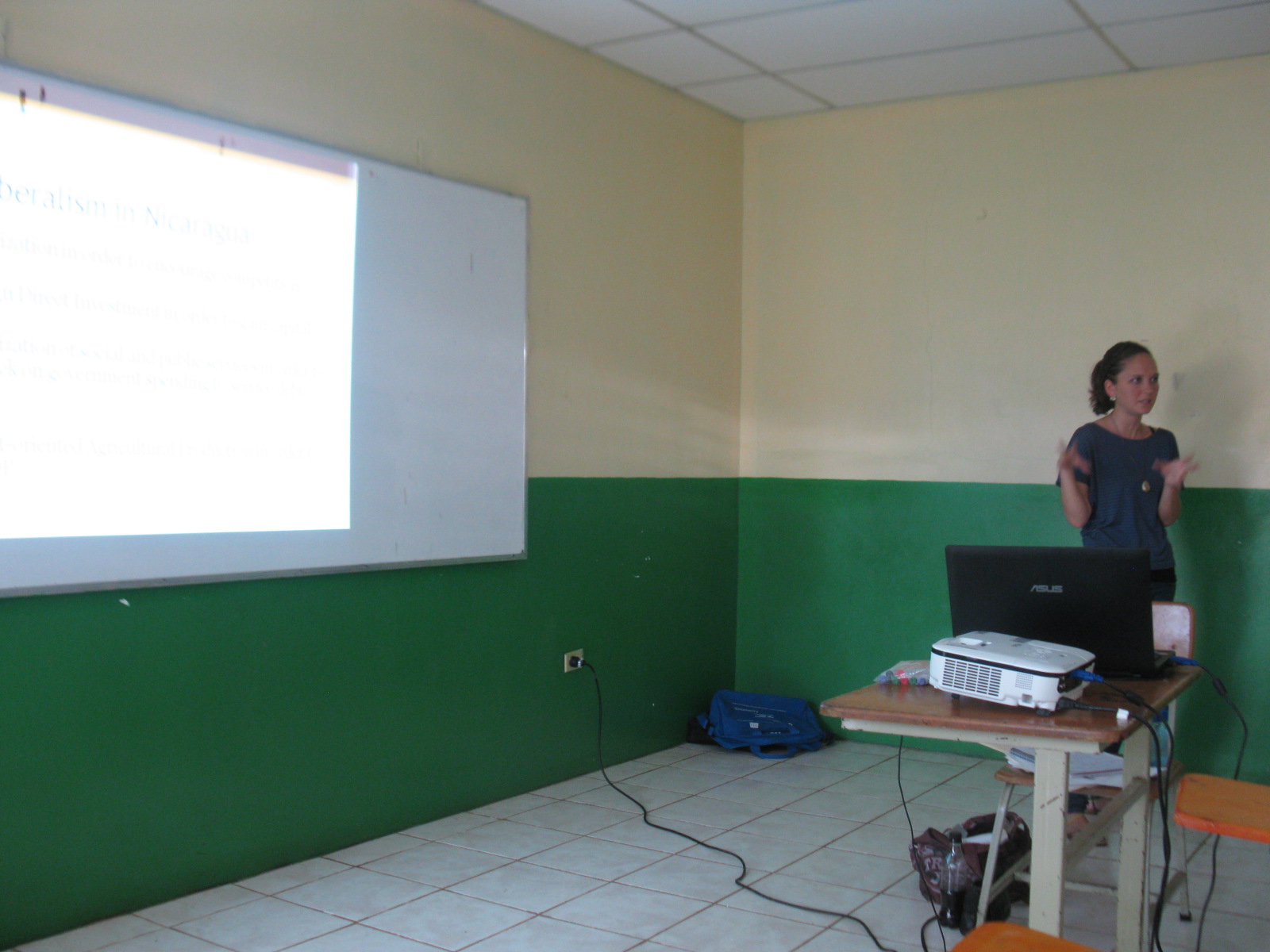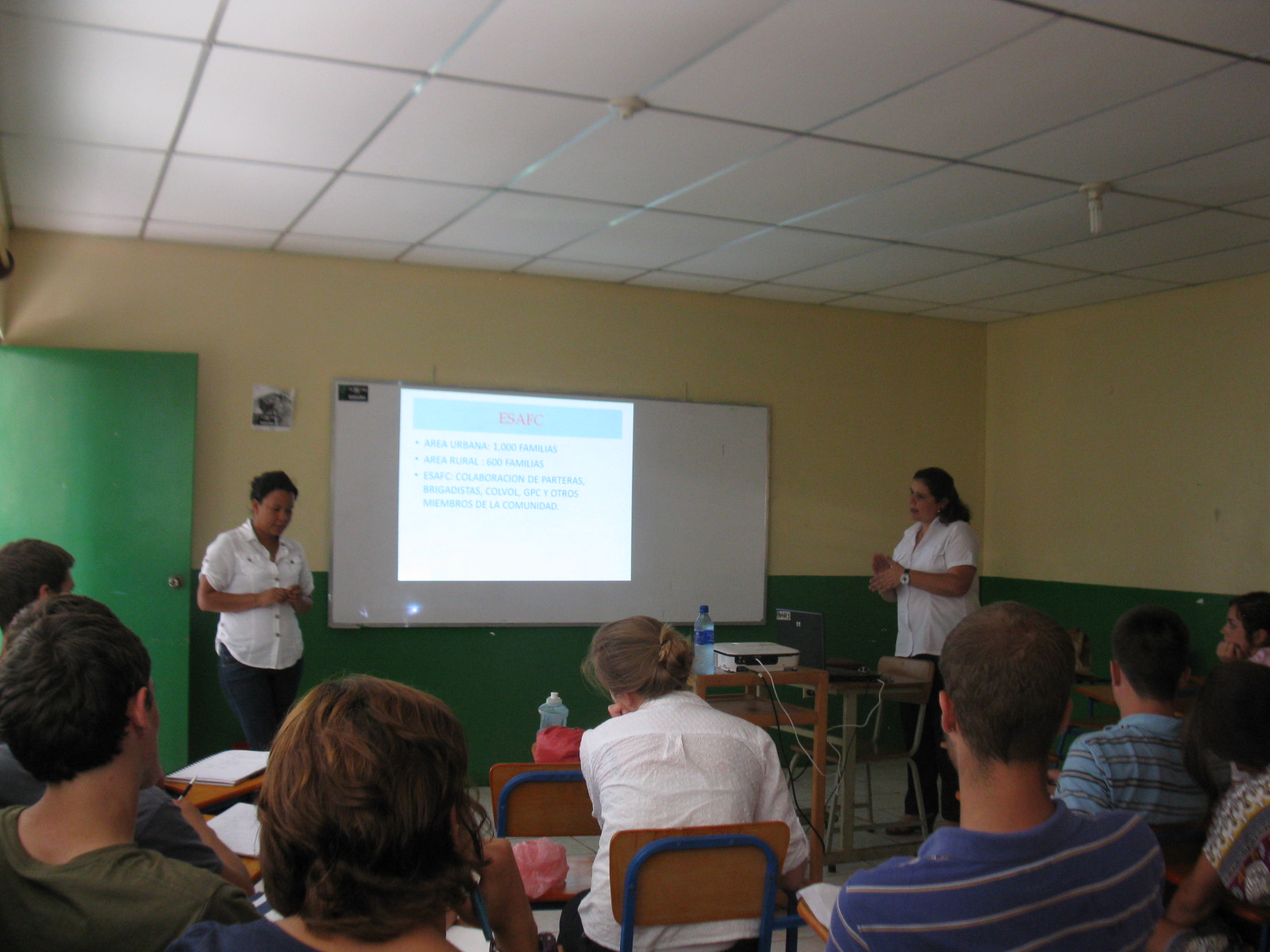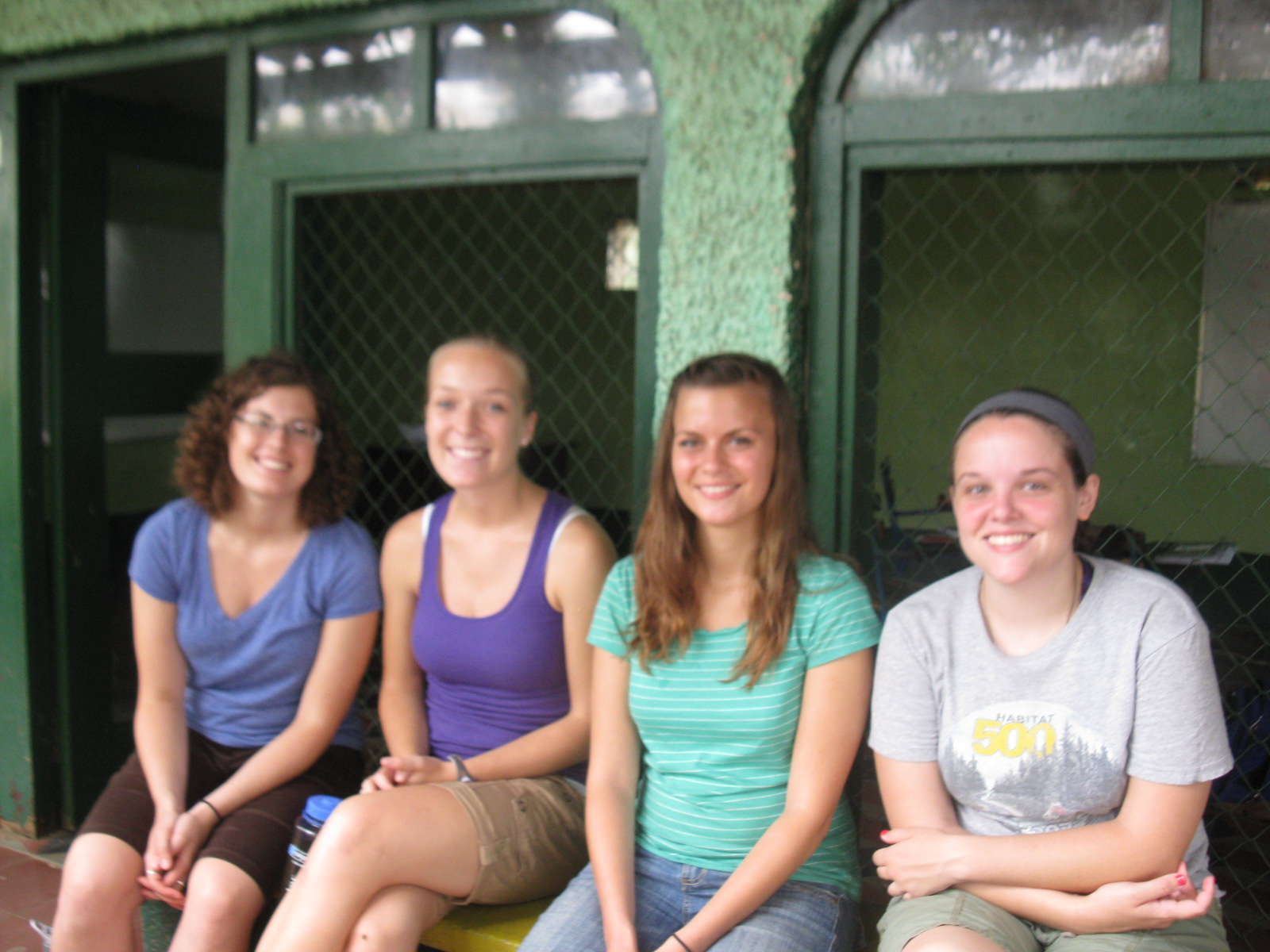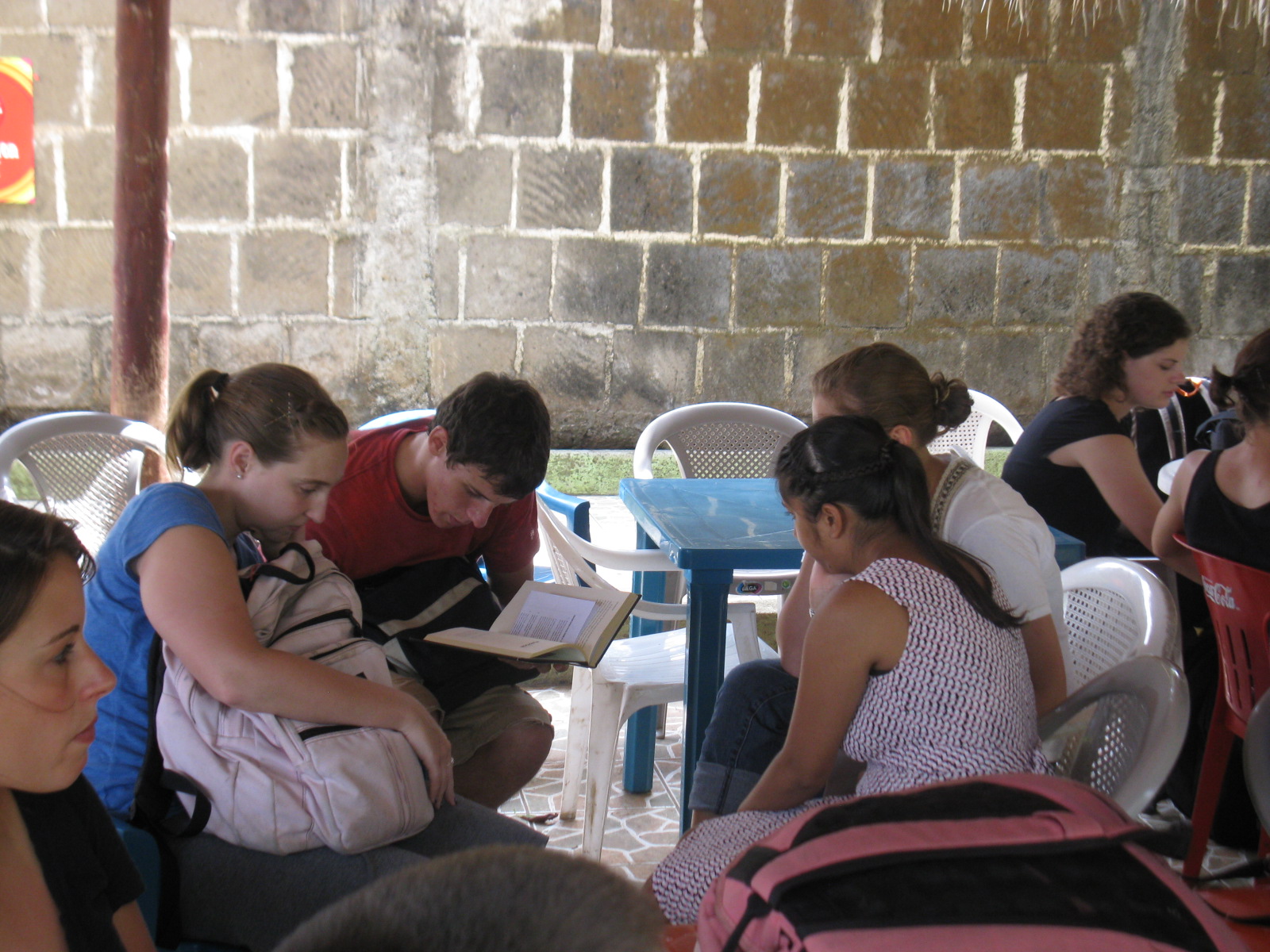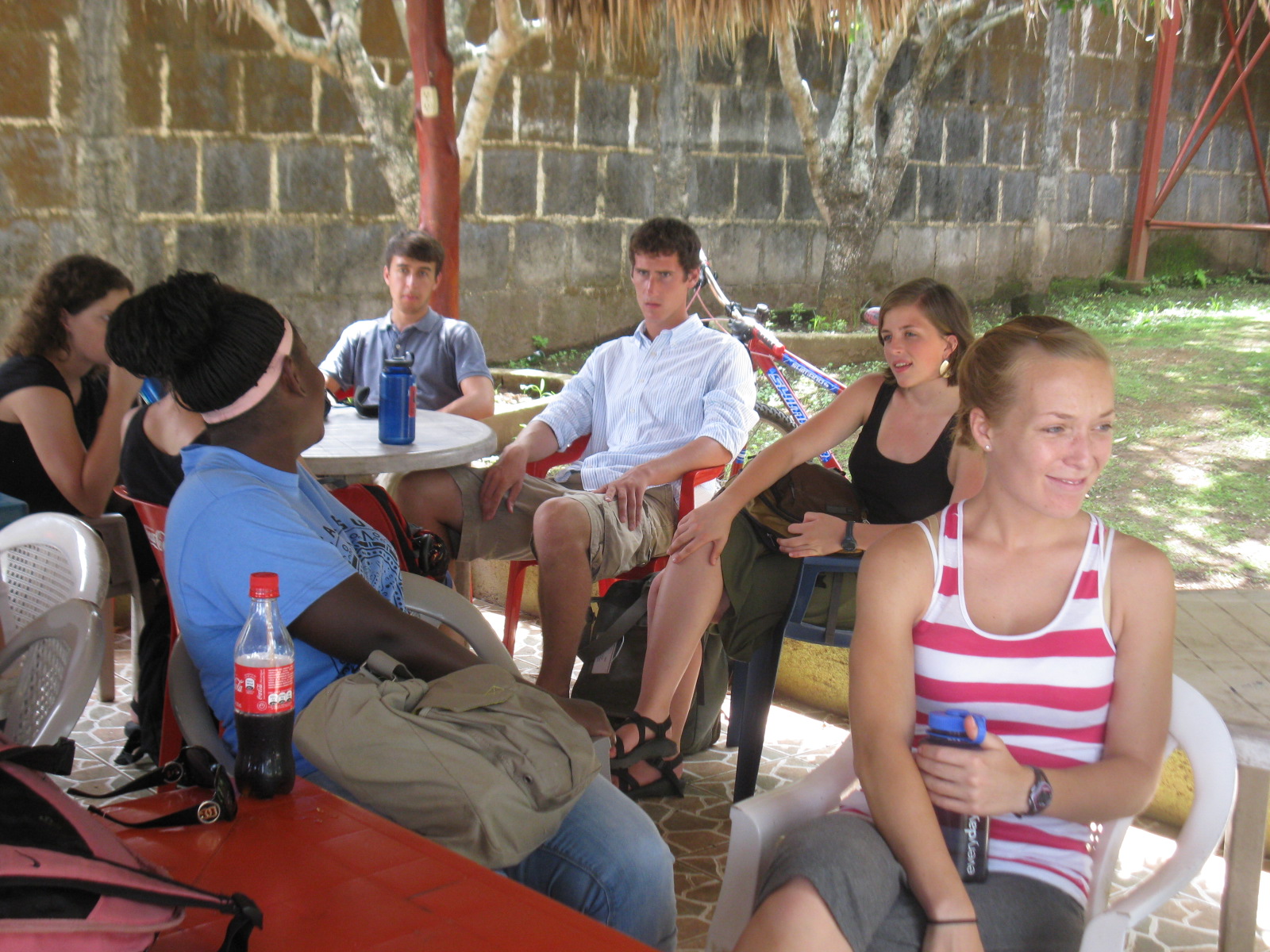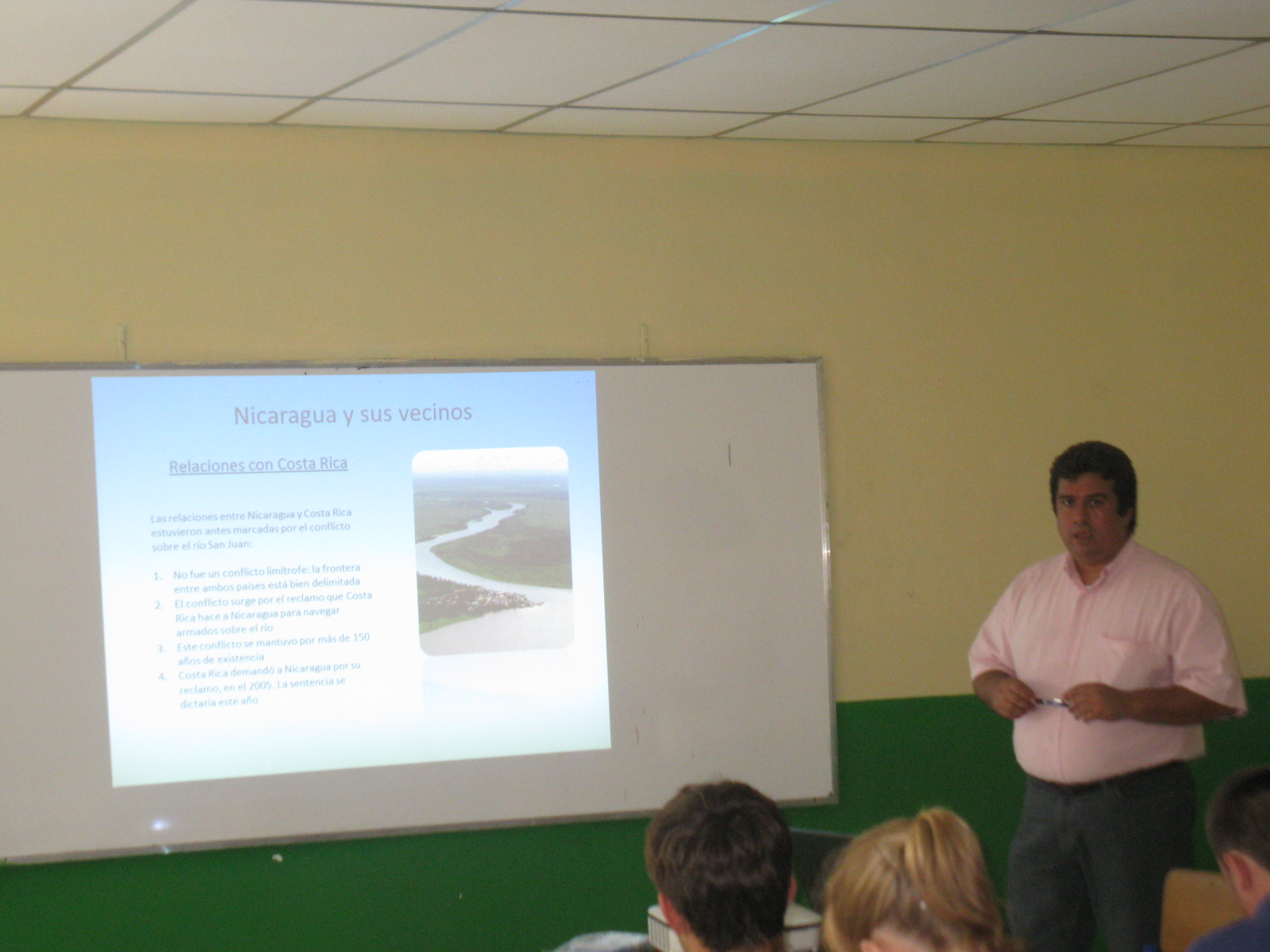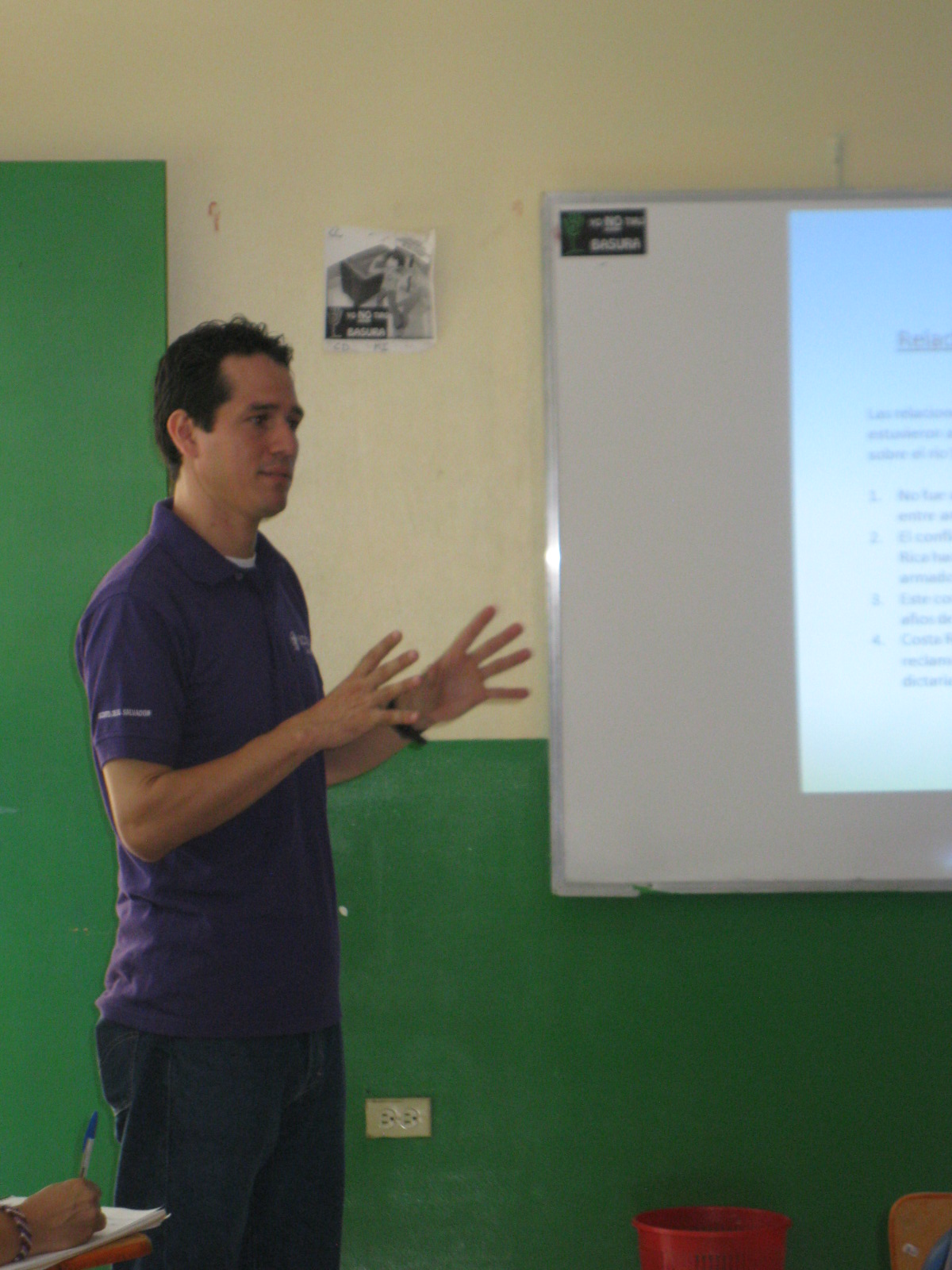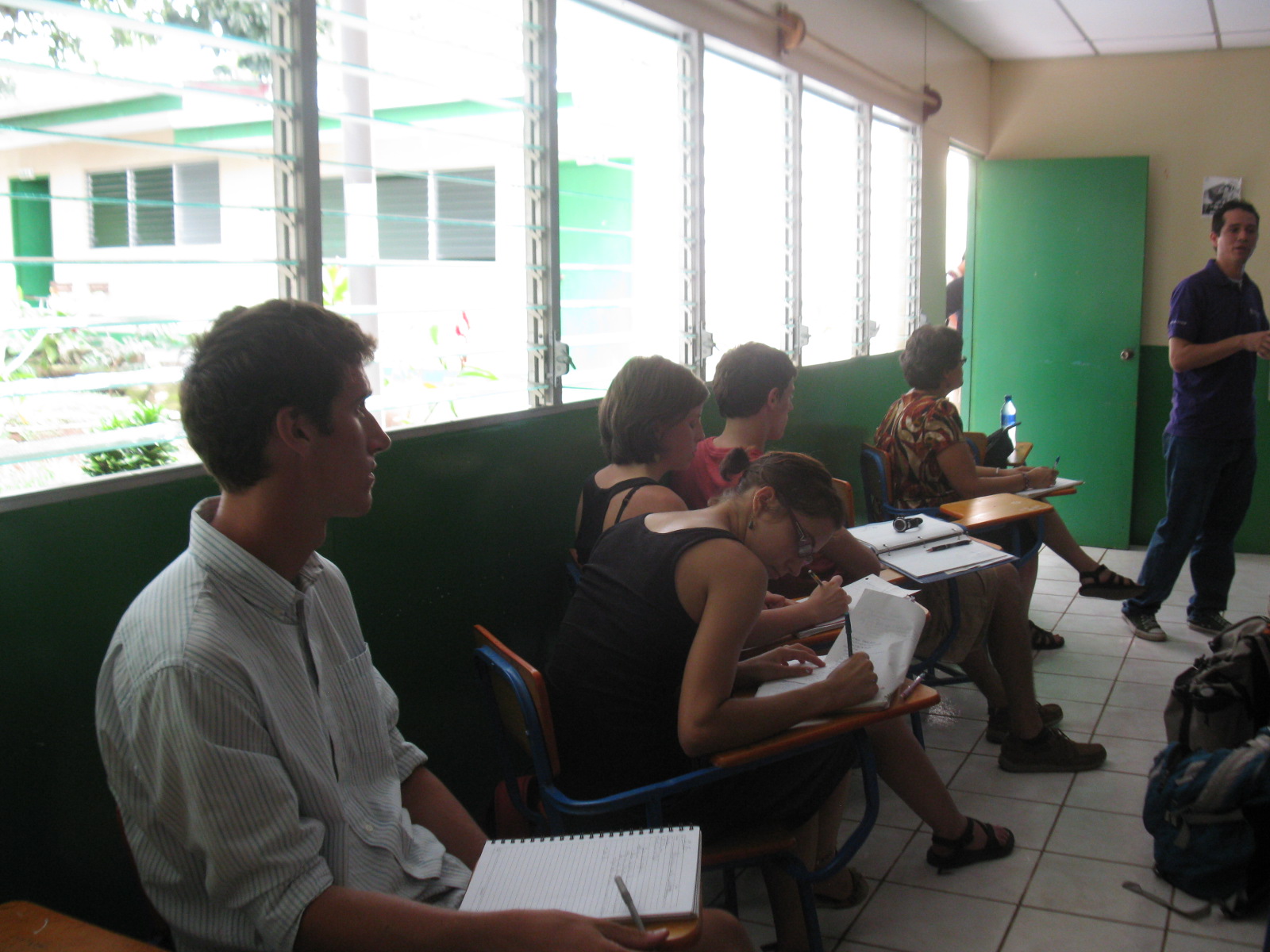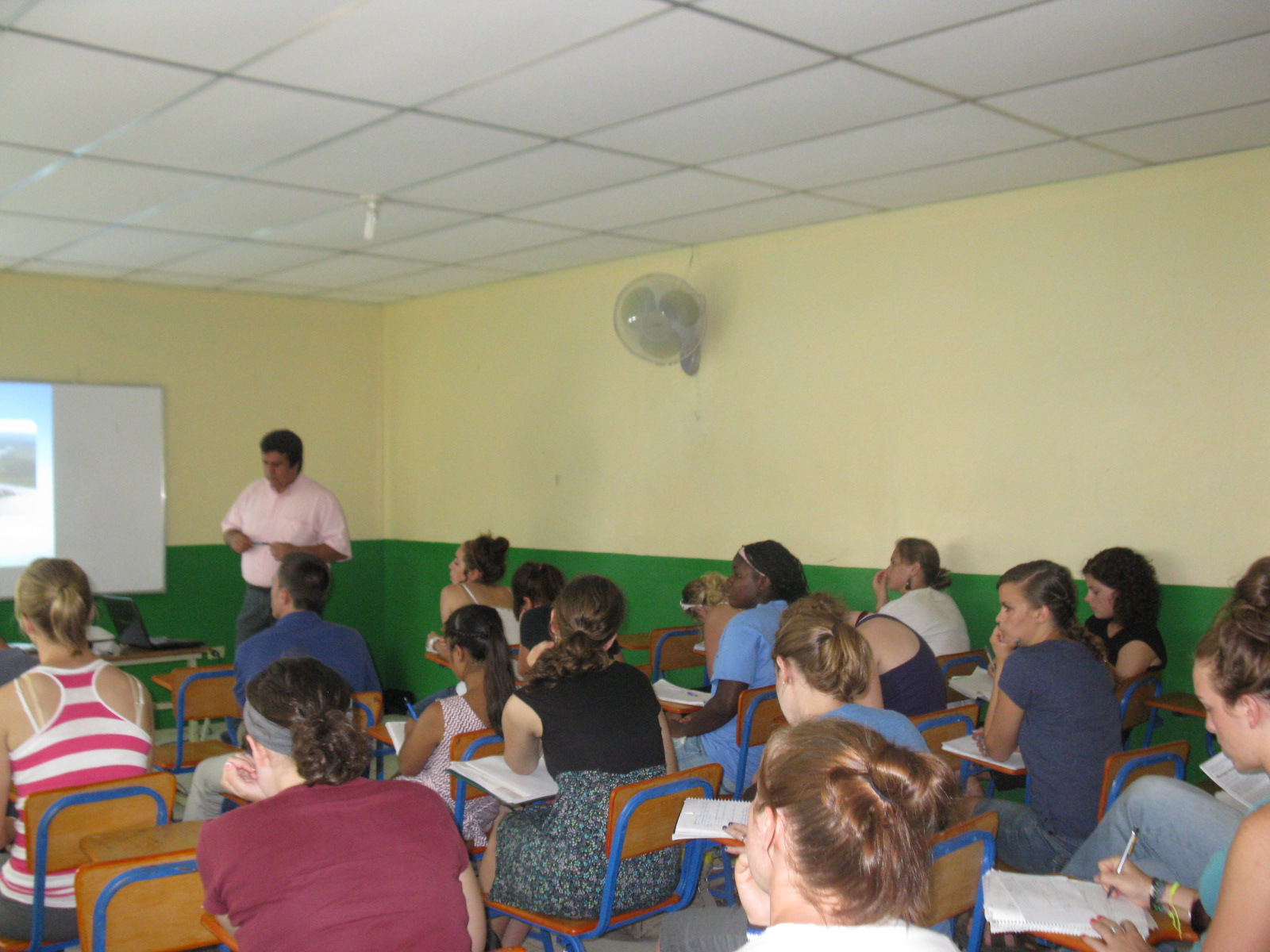Much to learn about Nicaragua
The last two weeks of the study portion of SST have been filled with lectures, field trips, and Spanish classes. This post will focus on the lecture portion of these activities, with posts following later about field trips and classes.
Students learned about the challenges of Nicaraguan health care from Doctora Gloria Lopez. The five principal health problems in the department of Carazo (where Jinotepe, Dolores & Diriamba are located) currently are infant mortality, an increase in chronic diseases (arthritis, diabetes), sexually transmitted diseases, respiratory diseases (asthma, pneumonia), and illnesses transmitted by insects (dengue, malaria). Many residents have limited resources to take care of these health problems. 60% of the national population has access to the public health system, which is provided free by the government but struggles with a limited amount of doctors, medicine and equipment. SILIAS administers the public health system throughout the country, and has made some significant improvements in the last few years after receiving increased funding from President Ortega’s administration, but it is still facing seemingly overwhelming challenges from our North American perspective. Six students who are majoring in nursing or pre-med were able to tour the public hospital in Jinotepe to get a first hand view of a Nicaraguan hospital, and compare it to their experiences in the United States.
Christine Goffredo, a staff member of Witness for Peace Nicaragua, explained the neoliberal economic policies that have affected Nicaragua. We learned about the World Bank, which lends money to countries for infrastructure improvements, and the International Monetary Fund, which is the lender of last resort for countries in crisis. The catch is that accepting funding from these organizations comes with stipulations. These include privatization of schools, health care, and utilities; budget restrictions (which programs to fund or not); currency stipulations, and free trade agreements. Neoliberal policies in Nicaragua have include privatization of the electric company in order to encourage competition, foreign direct investment in order to gain capital (maquilas and low-paying jobs), export-oriented agricultural production in order to increase GDP (instead of producing food to feed people in Nicaragua), and privatization of social and public services (education and health care) in order to cut back on government spending and provide cash to pay the debt to the World Bank and IMF. Christine was able to make this sometimes confusing topic understandable for the students, and also provide some context for some of what the students have been experiencing while living in Nicaragua.
Dr. Jeffrey McCrary works at the Biological Research Station at Laguna de Apoyo, and helped students understand the environmental issues facing Nicaragua. Nicaragua is known as the land of lakes and volcanoes, and living in Jinotepe means we are not very far from either of these. Laguna de Apoyo is a crater lake formed after the eruption of a volcano many, many years ago. Dr. McCrary was a wealth of information about basic biology, biodiversity, alternative energy, developing national reserves, and the environmental realities that are facing the Laguna and Nicaragua as a whole.
Edith Gutierrez helped the students learn about Nicaraguan literature, focusing on poetry, which is the major focus in Nicaragua as well. With few publishing houses, and a population that rarely reads for pleasure, Nicaraguan literature has focused on poetry, inspired by famous poet Ruben Dario (1867-1916). We also learned about El Güegüense, Nicaragua’s first theater piece, written in the 1500s but published in 1883, ironically in English. El Güegüense tells the story of the relationship between the indigenous people and the Spaniards through costumed dancers. Diraimba, where seven of our students live, is named after a indigenous leader who some say was the writer of this play.
Roberto Orozco explained about Nicaragua’s relationship with its northern and southern neighbors, Honduras and Costa Rica. There have been border disputes with both countries, but both have recently been resolved in Nicaragua’s favor. Economic data and comparisons with other Central American countries still show Nicaragua with the lowest minimum monthly salary ($98/month) and per capita income per year – $1,239 compared to $8,884 in Costa Rica, and $2,120 in Honduras. This explains some of the migration that is happening from Nicaragua to Costa Rica for better job opportunities.
